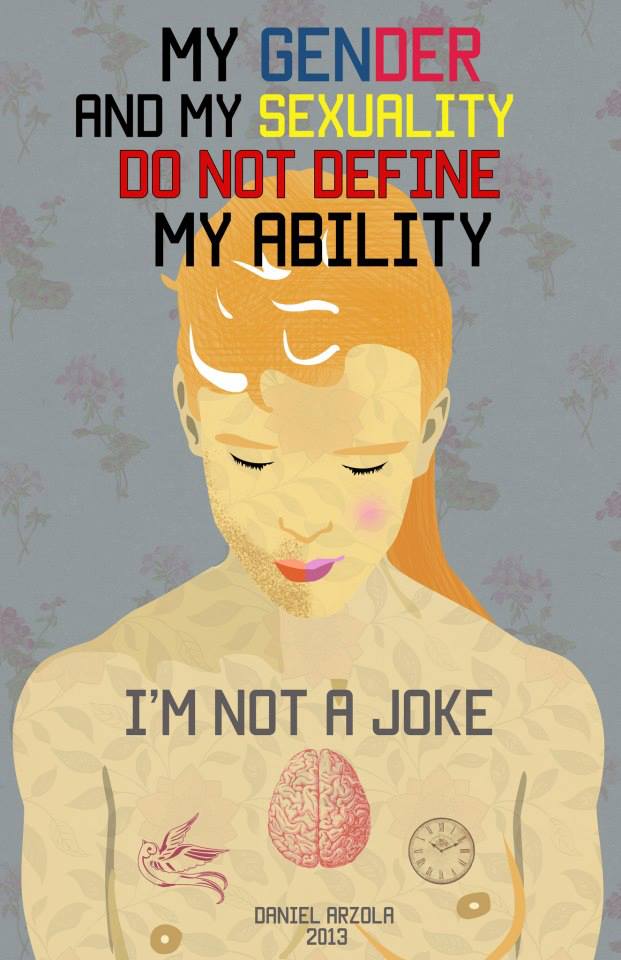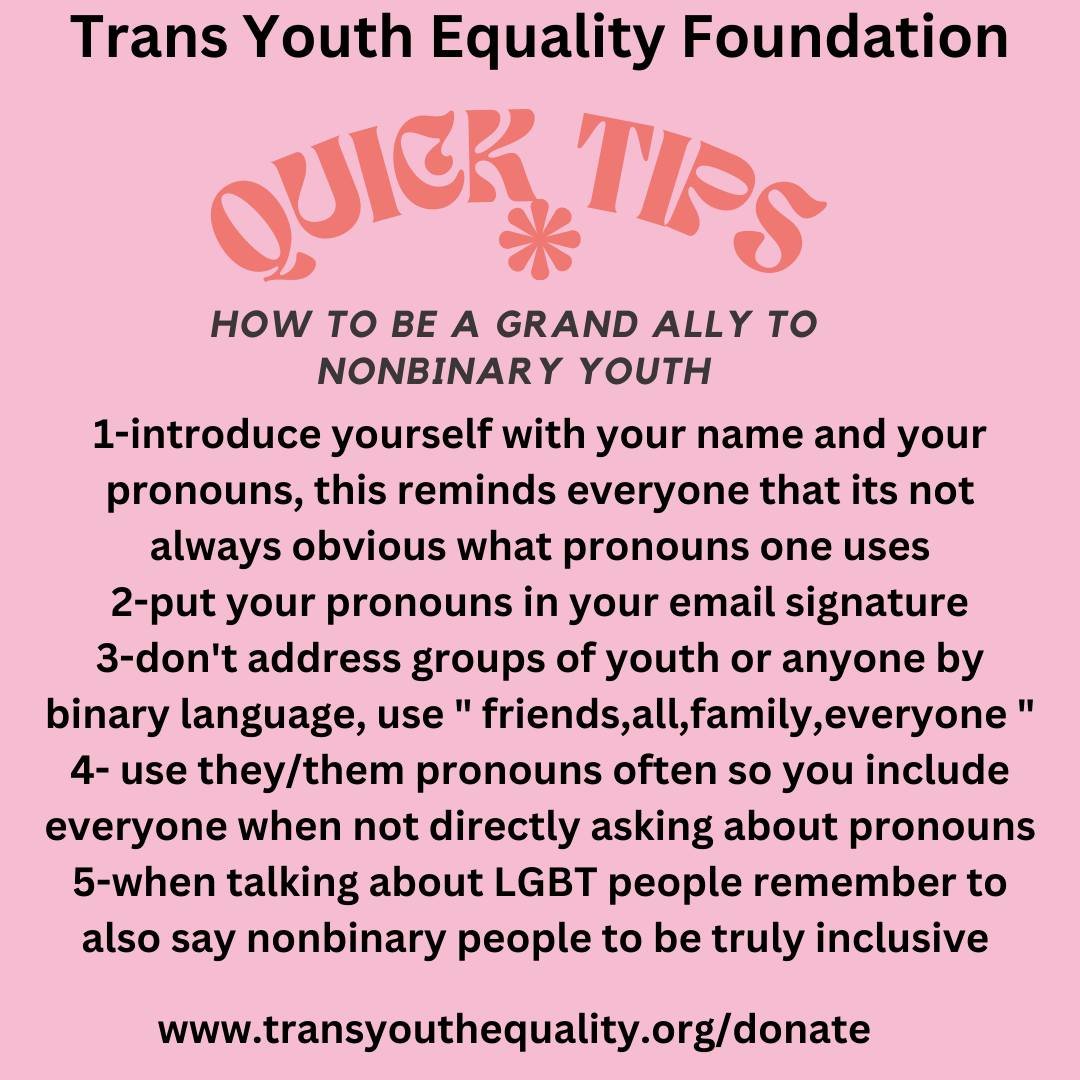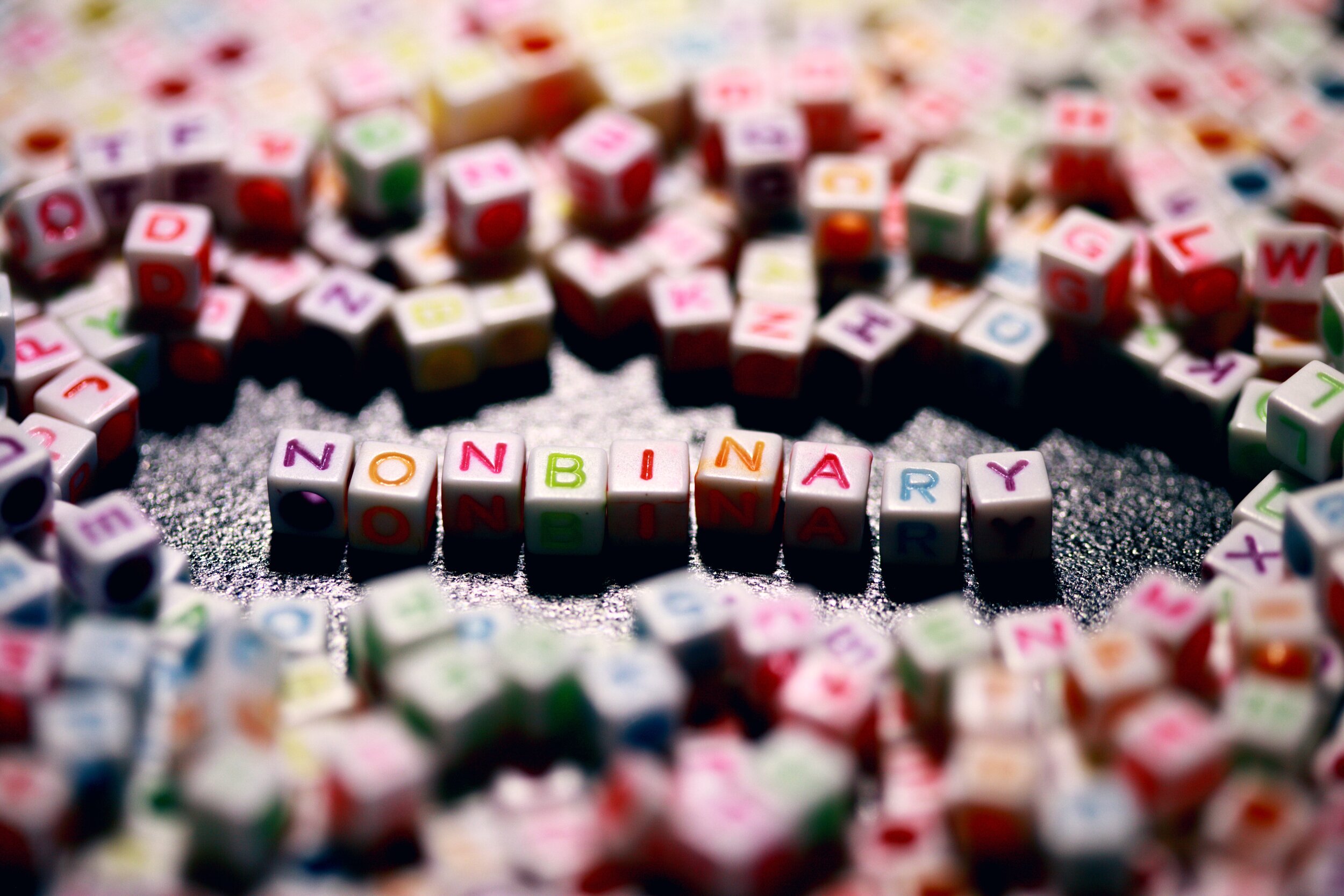GLOSSARY
The broad gender spectrum challenges us to sensitively define our labels.
A printable version is available for download at the bottom of this page.
Gender - According to Transgender Health Information Program of PHSA, “Socially and culturally constructed roles, behaviors, expressions and identities of girls, women, boys, men, and trans* people.” Gender is separate from biological sex, and one’s assigned sex at birth does not necessarily equate to a certain gender identity.
Gender Identity - The state of being a man, woman, non-binary, or however one defines themselves on the gender spectrum. Relates to a person’s deeply-held sense of self, and usually develops by early childhood. According to Mayo Clinic, most children “categorize their own gender by age 3 years. However, because gender stereotypes are reinforced, some children learn to behave in ways that bring them the most reward, despite their authentic gender identity.”
Sex - The biological and physiological characteristics of male and female. Sex is not binary, and there exist many possibilities outside of XX and XY chromosomes.
Transgender - An adjective used to describe a person whose gender identity does not conform to conventional notions of the sexes male and female. Transgender people may identify within the gender binary, somewhere on the spectrum between male and female, or entirely outside of it. The term is not a noun or a verb.
Cisgender - An adjective to describe a person who is not under the transgender umbrella. Their gender identity matches their sex assigned at birth.
Transsexual - An adjective to describe a person who emotionally and psychologically feels they need to be as the opposite sex. Most commonly defined as someone who medically changes themselves to the gender they identify as. A transsexual person may experience dysphoria throughout their lives. The term is considered by many to be outdated due to its complicated medical history, but some people do identify with the term. Many countries also use “transsexual” instead of “transgender.”
Transfeminine - An umbrella term that may be used to describe a person who was assigned male at birth, and identifies as trans. non-binary, or otherwise gender diverse. Transfeminine people may be binary or non-binary, and their gender expression often is more feminine.
Transmasculine - An umbrella term that may be used to describe a person who was assigned female at birth, and identifies as trans, non-binary, or otherwise gender diverse. Transmasculine people may be binary or non-binary, and their gender expression often is more masculine.
Transition - The process of changing from the gender role traditionally associated with one’s assigned sex at birth to another gender role. This process is highly individual and varies from person to person. For some trans and non-binary people, their transition may involve purely social transition or a change in gender expression. Others may seek medical intervention such as hormone therapy and perhaps even surgery. The time period of transition also varies.
Intersex - A general term used for a variety of conditions in which a person is born with reproductive or sexual anatomy that doesn't fit the typical definition of male or female. Intersex people may have variations in sex characteristics including chromosomes, hormones, and/or genitals. Some intersex people identify as trans and/or non-binary.
Dysphoria - A state of feeling unhappy; discomfort with oneself emotionally, mentally, or physically. In terms of gender, someone with dysphoria experiences significant discontent with their sex assigned at birth. TYEF offers a guide for relieving dysphoria on our “Resources for Parents” page.
Gender Dysphoria - The formal diagnosis used by psychologists and other providers for people with significant body dysphoria.
Endocrinologist - A doctor specializing in hormones, the endocrine system, and complications or disorders therein. Some endocrinologists specialize in treating trans, non-binary, or gender diverse patients.
Stealth - When a person lives completely according to their true gender identity, without disclosing their trans identity or previous experiences. Some people may live “semi-stealth,” where they only mention their trans identity to a select group of people but otherwise stay stealth. See more information about choosing when to disclose your trans identity.
“Passing” - Usually referring to binary trans people, “passing” means that someone is assumed by broader society to be a cisgender person of the gender they identify with. The term has a complicated and controversial history, causing some people to dislike it. Not all trans people want to pass, but some do. For some people, they want to “pass” to avoid discrimination and to be safer. Some people who “pass” may choose to live their lives as stealth, semi-stealth, or completely out.
Gender Non-Conforming - The behavior or expression of not conforming to societal definitions of male and female.
Genderqueer - A person who identifies as neither, both, or a combination of male and female genders.
Genderfluid - A person whose gender is fluid, meaning their gender can shift and change from various points on the spectrum, they may feel as though their gender is in a constant state of motion and readily shifting to their current state.
Bigender - A person who identifies as both masculine and feminine gender identities. They may feel they shift between a distinct feminine identity and masculine identity, or as though their gender identity encompasses a combination of their feminine and masculine identities.
Agender - A person whose identity is non-binary, or who may feel as though they are genderless or do not have a gender.
Non-binary - An adjective used to describe a person who feels their gender identity does not fall within the accepted gender binary of male or female, and may feel as though they are both, neither, or a mixture of two or more genders. Non-binary is an umbrella term for a group of gender identities outside of the male-female gender binary. Non-binary people have always existed throughout history in many different cultures.
Note: A non-binary gender marker will soon be available for all U.S. passports. See TYEF’s legal resources for more information on this.
Demigirl and Demiboy - A demi girl is a person who feels their gender identity partially identifies with a feminine identity, but is not wholly binary, regardless of their assigned gender. Likewise a demiboy is a person who feels their gender identity partially identifies with a masculine identity but is not wholly binary. Like a demigirl, a demiboy may identify this way regardless of their assigned gender. A demigirl and demiboy fall under the trans umbrella.
Neutrois - Neutrois is another identity that falls under the umbrella of gender neutral or transgender identities. In most cases neutrois can be understood as interchangeable for gender neutral, however there is not one singular definition for neutrois, as everyone experiences gender in a different way.
Androgynous - Possessing both masculine and feminine traits. Presenting in a way that appears not entirely all masculine, or entirely all feminine. This can be in regards to fashion, gender, physical characteristics, etc. Androgynous people have always existed throughout history in many different cultures.
Two-Spirit - An umbrella term for the diversity of genders and sexualities in many Native American cultures. Two-spirit people have traditionally been highly regarded in Native American communities throughout history. The term can only be used by Native American individuals, and non-Indigenous people cannot claim the term since this label carries specific cultural and historical significance. Not all two-spirit people identify as trans or queer, but some do.
Sexuality - A person’s sexual preference or orientation, ex.) gay, straight, bisexual, pansexual, transsensual, etc.
**This page was made by TYEF youth intern Kyle Smith, July 2014, modified by TYEF intern Meghan Schindler, June 2015, and further modified by TYEF intern Keira Logan, June 2021**
Download a PDF version for educational resources, courtesy of TYEF





